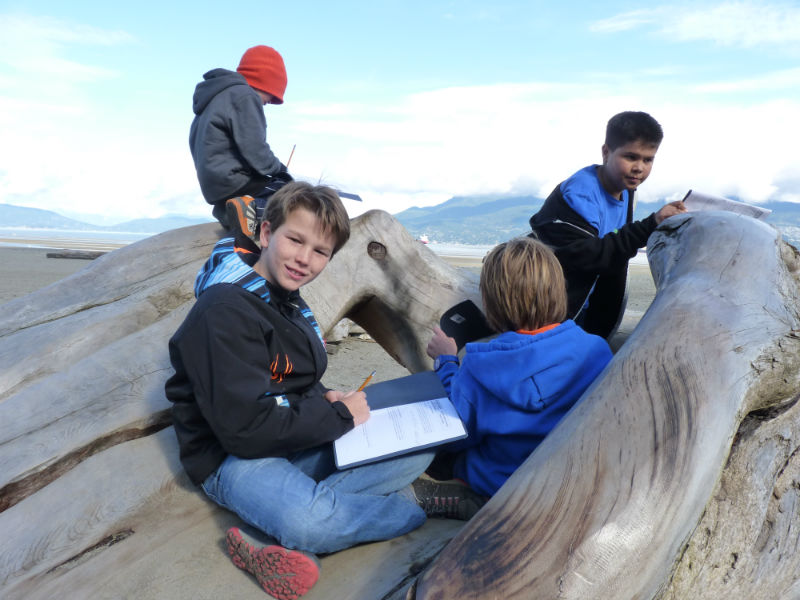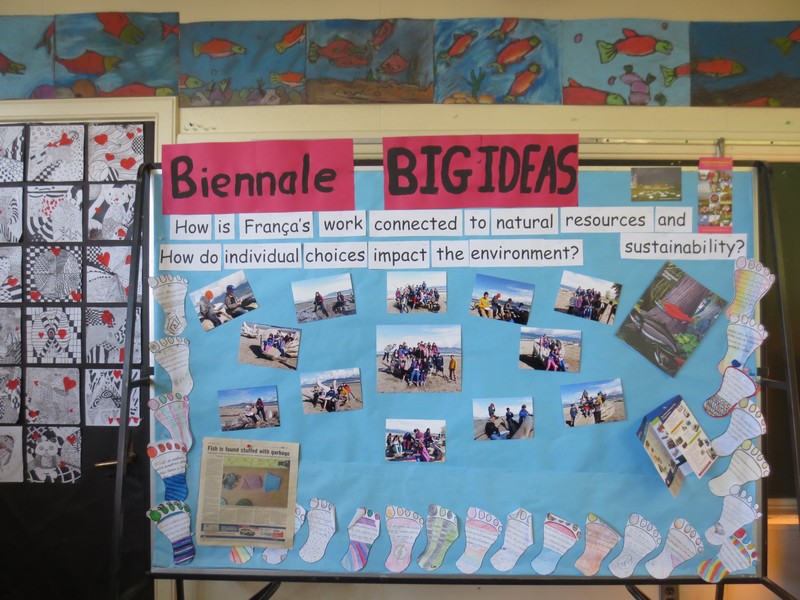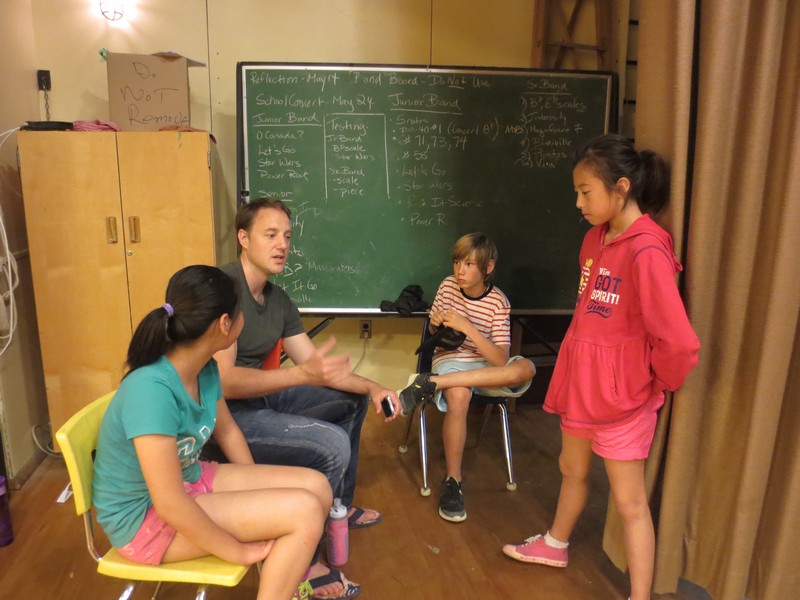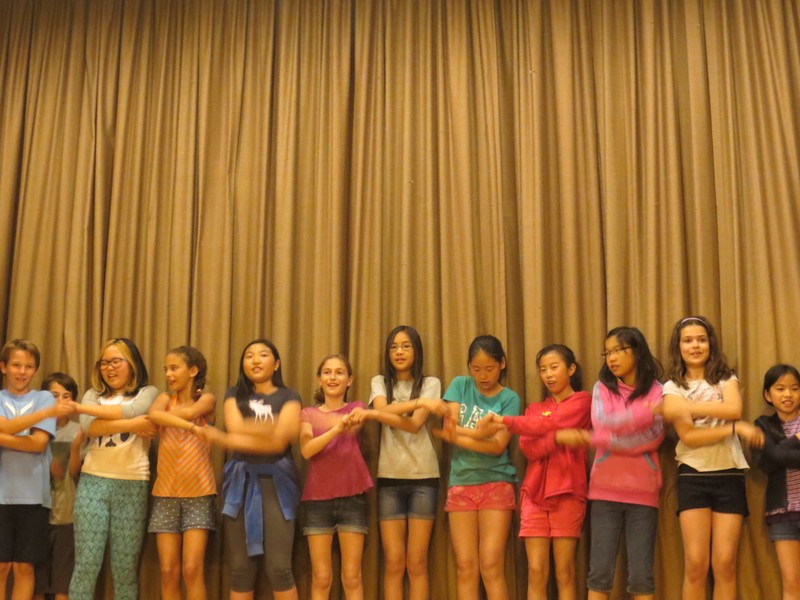Quilchena Elementary: Crossroads between environmental sustainability & human rights
Arts Education, Language Arts, Mathematics, Science, Social Studies
School: Quilchena Elementary, Vancouver
Teacher: Kim Reymond
Artist Collaborators: Brendan McLeod and Gordon Cobb
Class: Grade 5/6
Overview
Drawing inspiration from Public Furniture | Urban Tree, students looked at the actions and lives of individuals often reflect global issues and processes and have the ability to effect change at both the community and international level.
Connection to the Vancouver Biennale Exhibition
~ Introduce the Exhibition Theme: Open Borders Crossroads Vancouver, students were asked in what ways do they relate this theme to environmental impact.
– Public Furniture | Urban Tree
Give an instance of how Hugo França managed to open borders through transferring his knowledge and experience to our local species of trees.
Other Resources
- Song by artist Yannick Noah “Aux arbres citoyens”
- Movie: All I can (ski movie) – chapter on environment
- The Lorax- Dr. Seuss
- David Suzuki website
BIG IDEAS
The actions and lives of individuals often reflect global issues and processes and have the ability to effect change at both the community and international level
Guiding Questions
How does França’s life and artwork connect to, and challenge us reflect upon global issues such as land use, natural resources, human rights, sustainability, and the importance of Indigenous ways of living?
How could various interest groups work together to meet both environmental and economic concerns?
Learning Process/Inquiry challenges:
BC’s Natural Resources & França’s Use of Wood – Human/ Environmental Interaction
How is our life in Canada and British Columbia connected to natural resources? How is Hugo França’s work connected to natural resources and sustainability?
1/ Teacher develops a Concept Attainment Activity, to introduce students to renewable and non-renewable resources.
2/ Teacher-led discussion: What natural resource does França use in his work? Why does he use wood? Where does he find the wood for his work? Why does he only use wood from the forest floor?
3/ Introduce the Sustainable Design Awards Students might bringing in items or images of items that are sustainable and non-sustainable for follow up activity that around the generation of a sustainable product.
BC’s Natural Resources & França’s Use of Wood: Deforestation – Human/ Environmental Interaction
How do individual choices impact the environment?
1/ Facilitate discussion on the artist’s choice of cutting equipment and the dual meaning (destruction or creation).
2/ Students brainstorms items made from trees: one essential to living/the other that we can do without.
3/ Read The Lorax (ebook).
4/ Group work: half the groups are assigned to defend the Onceler and half to defend the Lorax.
5/ Host a debate defending Onceler and Lorax.
6/ Debrief: Groups take turns sharing sides.
7/ Teacher-led discussion around the need to strike a balance between satisfying needs/desires, using trees to make things like the Onceler does and protecting the environment. Possible Questions: Would we all just stop using trees altogether? What would a logical solution be?
8/ Extension: Students write a solution that would satisfy both the Onceler and the Lorax or write a different ending to the book.
• BC’s Natural Resources & França’s Use of Wood: Reforestation – How is wood a renewable resource?
1/ Teacher-led discussion to determine what students already know about forestry. Who owns the forest land? Who manages it? Who cuts trees? Who decides how much to cut? What is the cost of cutting timber? Is there a limit?
2/ Students view The Miracle Resource and record their reflections on their journal.
3/ Teacher-led discussion/ lecture on the ownership of forest land, logging operation and practice.
4/ Siviculture: teacher -led discussion or student driven research using the resources below.
Artists Workshop
The students learned songwriting structure, and then composed their own lyrics, melodies, and arrangement to an original song. They then choreographed a performance of it, and on June 2, performed this song to the student body and their families at Quilchena school.
Cross-Curricular Access
- Language Arts: Write a song and dance to help convey their message to the public
- Mathematics: Using a West End Google street map, measure individual areas of residential neighbourhood land, park space, business development and public space like schools and community centres. Calculate and estimate each area and compute the total areas by land use.
- Science: Use the Steps to Inquiry to come to analyze and interpret data, patterns , investigations… http://smarterscience.youthscience.ca
- Science: Use the science fair to create environment sustainable experiments – projects (ie. solar panels etc). Renewable and non-renewable resources
Student Creation
- Students composed their own lyrics, melodies, and arrangement to an original song.





